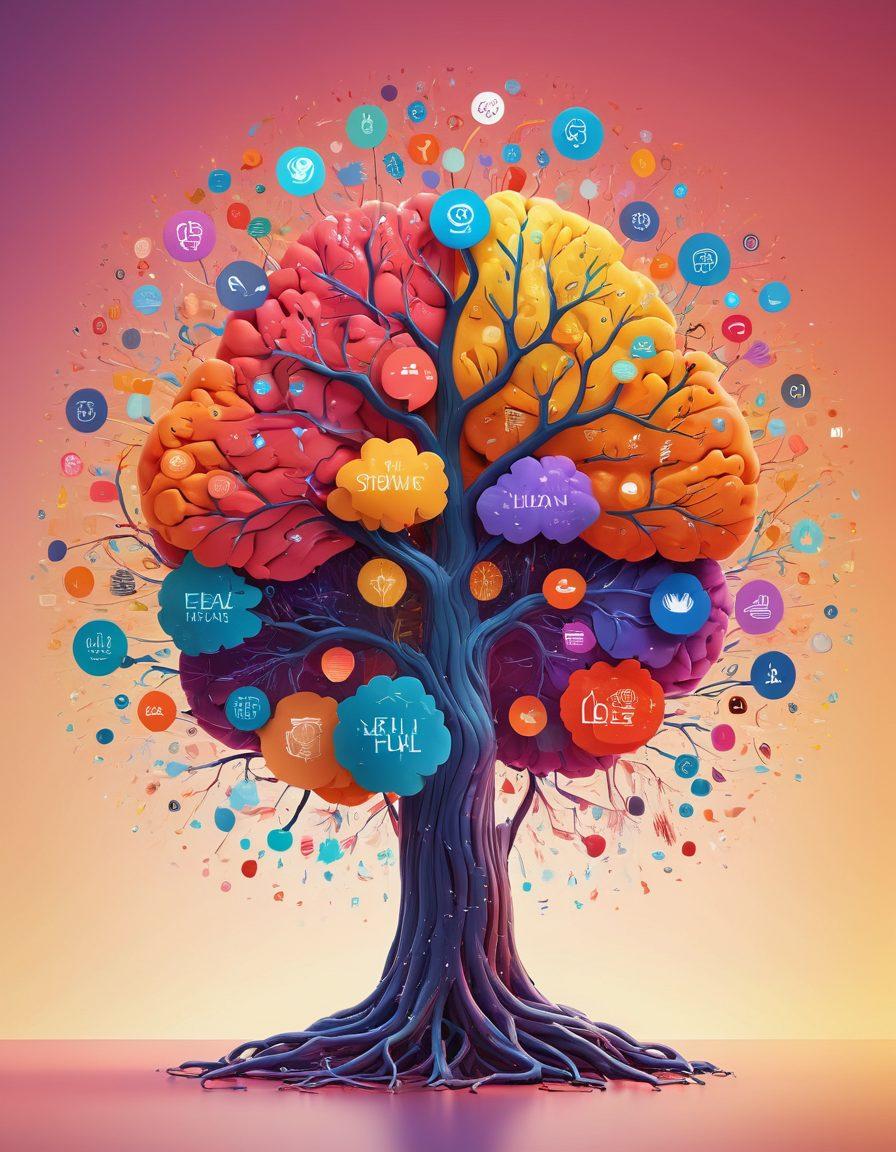Unraveling the Depths of Sadness: Insights from Recent Emotion Research
In recent years, sadness has emerged as a focal point in the ever-evolving field of emotion research. With countless studies unraveling the fabric of our emotional lives, it's beguiling to think that something as universal as sadness can be dissected through scientific investigation. Why do we feel sadness, and what can it reveal about our mental health? As we embark on this journey through data-driven insights, let’s take a moment to reflect: can understanding sadness help us navigate the complexities of our emotions more effectively?
Recent mental health studies have painted a vivid picture of the intricacies surrounding sadness. Through data collection, researchers have unearthed key findings that explore not just the causes but also the consequences of this profound emotion. A fascinating example comes from qualitative research that highlights personal narratives, showcasing the diverse interpretations of sadness. These poignant stories remind us that behind every statistic lies a unique human experience, beckoning us to ask—what is the shared thread that connects us all in our moments of sorrow?
The power of quantitative studies cannot be underestimated in the realm of psychological insights. With rigorous behavioral analysis and systematic evaluations, researchers sift through layers of data to reveal patterns in emotional responses. Data analysis has shown that factors such as age, geography, and socioeconomic status can significantly influence our experience of sadness. It prompts us to ponder: how does our environment shape the narrative of our emotional experiences?
Through scientific inquiry, we gain insights that challenge the stigma often associated with sadness. Embracing evidence-based research encourages us to view sadness not as a weakness, but as a natural part of the human experience. Research findings suggest that acknowledging and expressing sadness can foster resilience and create pathways to personal growth. Are we ready to shift our perspectives and embrace sadness as a stepping stone to understanding ourselves better?
As we explore the scientific landscape of sadness, it becomes clear that the emotional spectrum is vast and complex. The ongoing journey of insight generation through social research serves as a crucial reminder of the need for empathy in our interactions with others. By actively engaging in conversations about our mental health and sharing our stories, we can cultivate a society that enriches emotional understanding. What steps can we take today to foster a deeper connection with ourselves and those around us amidst the waves of sadness that life inevitably brings?
Understanding the Emotional Spectrum: What Recent Research Reveals About Sadness
In the intricate tapestry of human emotions, sadness often appears as a heavy thread that weaves in and out of our lives. But what if I told you that recent emotion research has provided us with new insights into this complex feeling? A scientific investigation into our understanding of sadness reveals not just the depths of despair but also the significance it holds in our emotional spectrum. As we delve into the findings of a groundbreaking mental health study, we uncover layers of understanding that can help us navigate our emotional landscapes in a more informed way. Why does sadness resonate so deeply with us, and how can understanding its nuances improve our mental health?
Recent data analysis in the field of emotion research has shown that sadness is not merely an emotion to be avoided; it's an essential component of the human experience. Academic research highlights that expressing sadness can facilitate connection and empathy between individuals. For example, one study found that people who openly discuss their feelings of sadness often experience a sense of relief, indicating the therapeutic power of vulnerability. Could it be that embracing our sadness opens the door to deeper relationships and greater self-acceptance?
Through various methodologies—including behavioral analysis and qualitative research—scientists have gathered a wealth of evidence-based research that sheds light on how we process sadness. Each quantitative study contributes a piece to the puzzle, revealing patterns and commonalities in how people experience this emotion. Consider this: is sadness always linked with negative experiences, or can it also serve as a catalyst for positive change? As we reflect on the data collection methods employed, we find that sadness often leads to profound personal insights and transformations.
The implications of these research findings extend far beyond the laboratory; they hold practical significance for our daily lives. Understanding the emotional spectrum, particularly the role of sadness, can empower us to respond to our feelings with compassion rather than judgment. Imagine being able to distinguish the difference between sadness that calls for introspection and that which simply reflects a transient mood. What if we could use psychological insights from emotion research to cultivate emotional resilience in ourselves and others? This possibility is not just aspirational—it’s rooted in actionable strategies derived from scientific inquiry.
In the quest for emotional clarity, the evaluation of sadness through social research reveals opportunities for growth and deep connection. Next time you encounter sadness, remember that it is not a flaw but rather a natural part of life. Allow yourself to sit with it, to explore its origins and meanings. As you do, consider how recent research in emotion can inspire a more profound understanding of human experiences. After all, as we navigate the complex pathways of our emotional lives, finding interpretations that resonate can be incredibly liberating. So, what will you learn from your next encounter with sadness?
From Data to Discovery: How Emotion Research is Redefining Mental Health Perspectives
In a world where the stigma surrounding mental health is gradually dissolving, emotion research is capturing our attention like never before. Recent studies have illuminated the complexities of sadness, transforming it from a mere fleeting feeling into a multifaceted area of scientific inquiry. What do these findings reveal about our emotions? How can they redefine our understanding of mental health? Let’s embark on a fascinating journey through data collection and qualitative research, translating raw statistics into compelling narratives of the human experience.
Imagine receiving a heavy tome filled with numbers, graphs, and charts. At first glance, it seems daunting. But what if I told you that within these pages lie profound psychological insights? This is the essence of academic research in the realm of emotions. The juxtaposition of qualitative and quantitative study not only enriches our comprehension of sadness but also offers us actionable insights. Recent emotion research showcases how behavioral analysis can unlock doors to understanding our mental health, encouraging us to embrace—not shun—our feelings.
One striking example derived from a recent mental health study illustrates the power of sadness. A group of scientists undertook a quantitative study aiming to determine how different cultures express and interpret sadness. The evaluation of the data revealed that while sadness is universal, the narratives we attach to it vary significantly across communities. This raises an intriguing question: How do our societal experiences inform our emotional vocabulary? Let’s remember that through these narratives, we find connections that foster empathy and understanding among diverse individuals.
Perhaps one of the most captivating aspects of emotion research is the emerging trend of evidence-based research. We are beginning to shift from traditional methodologies to innovative data analysis techniques, which incorporate both hard metrics and personal testimonies. This shift allows for insight generation that reveals the nuanced layers of sadness. As we gather findings from diverse sources—like social research and scientific investigations—we enrich our collective knowledge base and challenge conventional interpretations of mental health.
As we navigate through this rich tapestry of emotion research, it's evident that transforming sadness into an area of actionable insight is a journey worth embarking on. The insights gleaned from these studies help us explore how we experience sadness individually and collectively—serving as a poignant reminder that understanding our emotions is not just about identifying negative feelings, but also about amplifying our resilience. In a world where mental health remains a crucial conversation, let us continue to draw wisdom from these studies and champion emotional literacy for ourselves and future generations.


